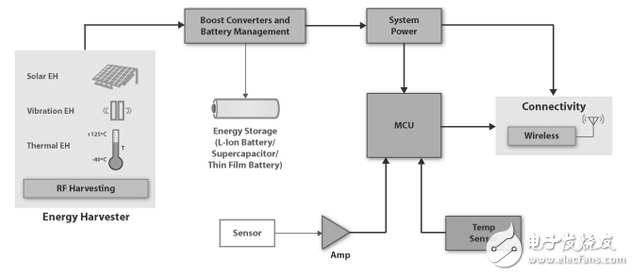
资料下载

电源管理IC简化集成超级电容器的能量microharvesting设计
电源管理IC简化集成超级电容器的能量microharvesting设计
能源microharvesting应用如无线传感器节点需要周期性的爆发力量远远超出大多数环境来源的稳态可用。在这方面,超级电容器提供了非常适合于能量收集环境的性能特性。由超级电容器适当的功率和充电管理电路相结合,利用从制造商包括线性技术,集成的专业设备,和德克萨斯的工具,工程师可以利用microharvesting技术应用要求的峰值功率要求。
电化学双层电容器(电容器),或超级电容器,能够排出几十甚至几百毫安的电流在几秒钟的过程(见高新区的文章“超级电容器满足能量收集应用的独特需求)。例如,对于无线传感器节点应用而言,这种功率输出在无线通信突发的峰值需求包中很好。超级电容器的高效充放电循环使其非常适合于突发式应用,如无线传感器节点。

Similarly, their efficient charge/discharge characteristics make them well suited to specialized demands of microharvesting applications that must periodically “cold boot” after an extended absence of ambient energy has depleted all onboard charge storage devices. Here, the full application circuitry is reenergized sequentially after microharvesting circuitry first charges a bootstrap supercapacitor used to power subsequent stages of the bootstrap process.
A typical microharvesting application uses supercapacitors as the sole storage device or as supplemental storage for peak or cold boot requirements (Figure 1)。 For load management, a DC/DC converter is required to maintain a stable supply voltage to the load because the voltage output of a supercapacitor is linearly proportional to the charge on the supercap. Engineers will typically use a buck-boost converter with low dropout to extract maximum power from the supercap even as charge levels drop under load.
声明:本文内容及配图由入驻作者撰写或者入驻合作网站授权转载。文章观点仅代表作者本人,不代表电子发烧友网立场。文章及其配图仅供工程师学习之用,如有内容侵权或者其他违规问题,请联系本站处理。 举报投诉
- 相关下载
- 相关文章







